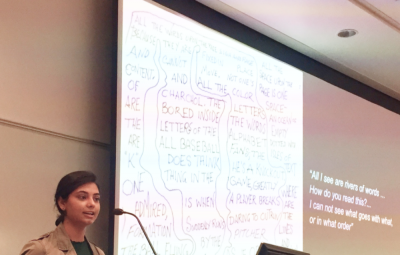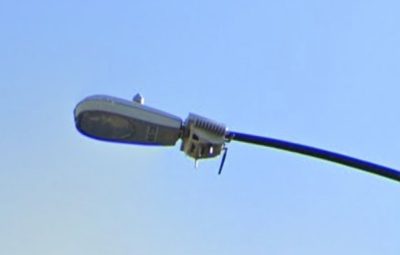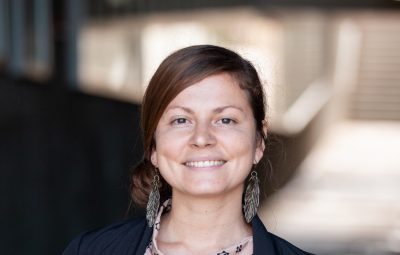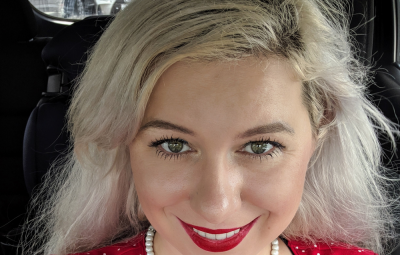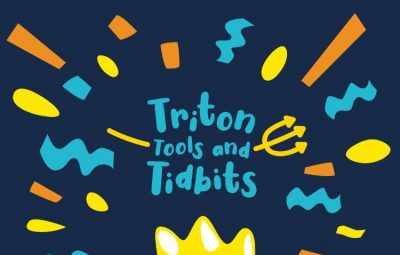This past July, San Diego high school students embarked on a five-day dive into anthropology and design as part of Design Bootcamp, a collaboration between the UC San Diego Design Lab and UC San Diego Extension.
The class first emerged from the demand for design workshops in San Diego coupled with UC San Diego’s interest in offering classes to pre-collegiate students. “This first Research Scholars ‘Design Bootcamp,’ if you will, is our first prototype,” says Michele Morris, Design Lab Associate Director. “The needs of the University, the expertise of the Design Lab, and the community platforms of UC San Diego’s Extension all came together seamlessly.”
Mayya Azarova, a Design Lab Anthropology PhD candidate, joined the team as the Bootcamp’s inaugural instructor. Coupling her background in anthropology with design, the team customized an offering focused around ethnography and empathy-building.
While the Bootcamp was in session, the group met every morning for a synchronous class, where they discussed readings and Azarova led exercises.
Azarova compared the class to a small tutoring group. “You can [give] very personalized attention to every student, and they really liked that. They liked that everyone could speak in class, express themselves, talk through their homework, so it’s not the type of homework you submit and you’ll never know whether anyone read it and you just get some grade,” she says. “The work you do matters, because then you’ll be describing and presenting it, and you’ll hear the feedback and listen [to] how your work was perceived by other people.”
Because the Bootcamp was geared towards a younger audience, the curriculum and pacing were different from a traditional design class. “It was not your typical jump into design thinking, all the stages, and practicing and prototyping, discovering the problem, prototyping solutions and presenting it,” explains Azarova. “We spent quite a lot of time on talking about anthropology as a discipline and how it relates to design, and design is also a big umbrella term, so that took some time. I wanted them to come out of this course understanding the broader, humanistic perspective [for] the world and how the research they’re doing could affect other people.”
One of Azarova’s favorite moments in the class was observing how the students started seeing objects in their lives differently. “We based our classwork on Don’s book [the] Design of Everyday Things, and I think it’s always very fun for students to start looking at the things that are around them [with] new, fresh eyes,” says Azarova. “They start [thinking], ‘Oh, this means [this] was also designed, like everything around us, someone put some thought into it.’ It’s not only the bridge, not only the building, it’s everything around us, including the processes.”
This is not the Design Lab’s first foray into offering design education for a younger crowd. As part of the Educators Alliance, the Lab is plugged into a community of San Diego educators teaching design to students from elementary school to college level and beyond.
Morris speaks to the importance of introducing design methods and thinking at a young age. “In these early ages, they’re figuring out how to think, not just what to think. As we move forward, as we go along in our educational journey, and as we get older, we tend to focus more on the what and less on the how. It’s harder to change the how,” she says. “For example, one of the best submissions for the Design Lab’s Design For San Diego Challenge (d4sd.org) this year came from a first grade class out of Del Mar Union School District, and it was just because of the wonder, the curiosity, the humility, the confidence. I think that’s what makes the human experience worthwhile and what makes design magical.”
In terms of the future of the Bootcamp, Morris and Azarova hope to build on the current model and make it even better in the coming years.
“We are thrilled to partner with UCSD Extension on this. They have a wealth of knowledge and expertise and are wonderful to work with. From a content perspective, our hope is that we’ll be able to build out multiple versions of this Bootcamp to accommodate a wide spectrum of design interests, genres, specialties, etc.,” says Morris. “From a logistics standpoint, our goal is to learn from this first prototype both internally, in terms of how we can operate better, but also in partnership with Extension so that their program and UCSD as a whole will be elevated through offerings like this one.”

